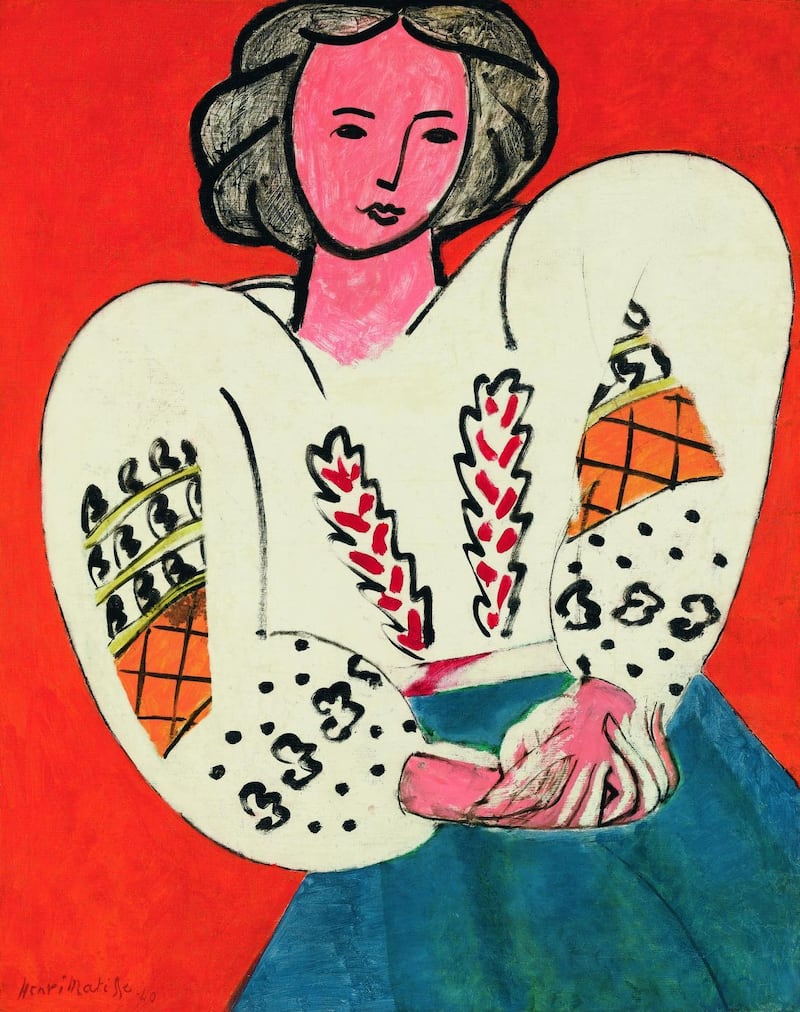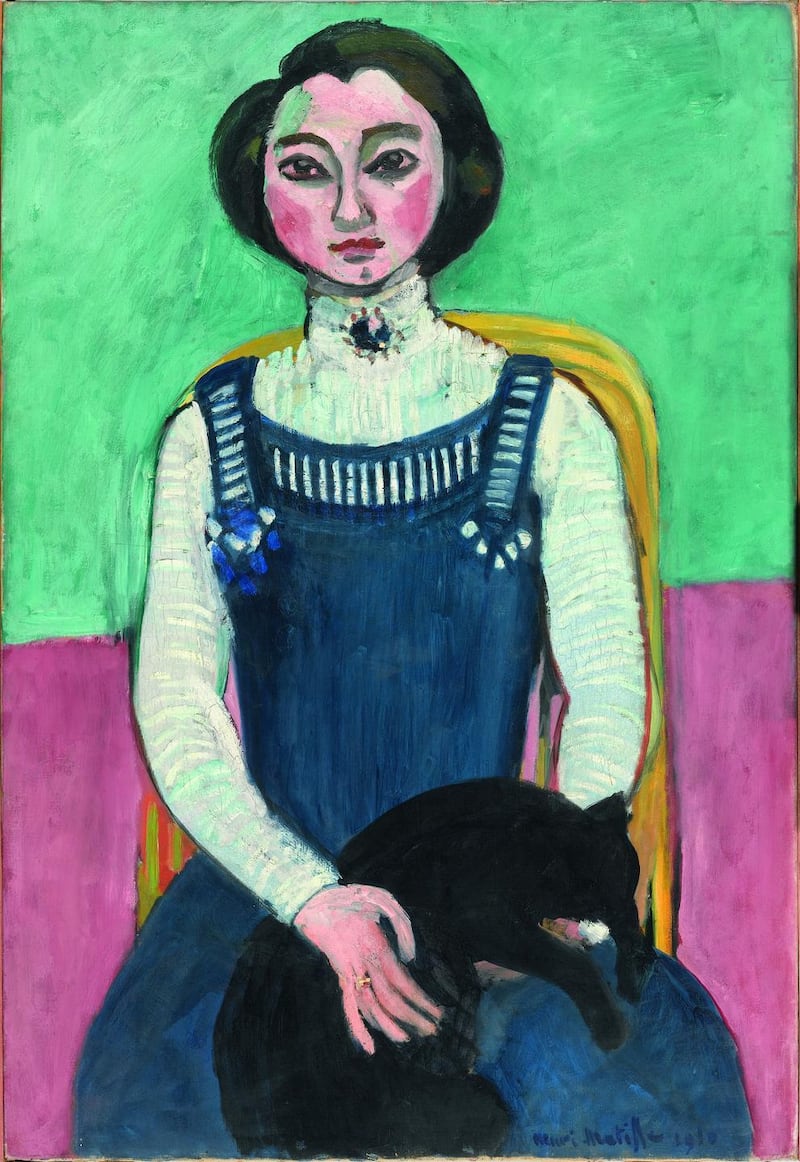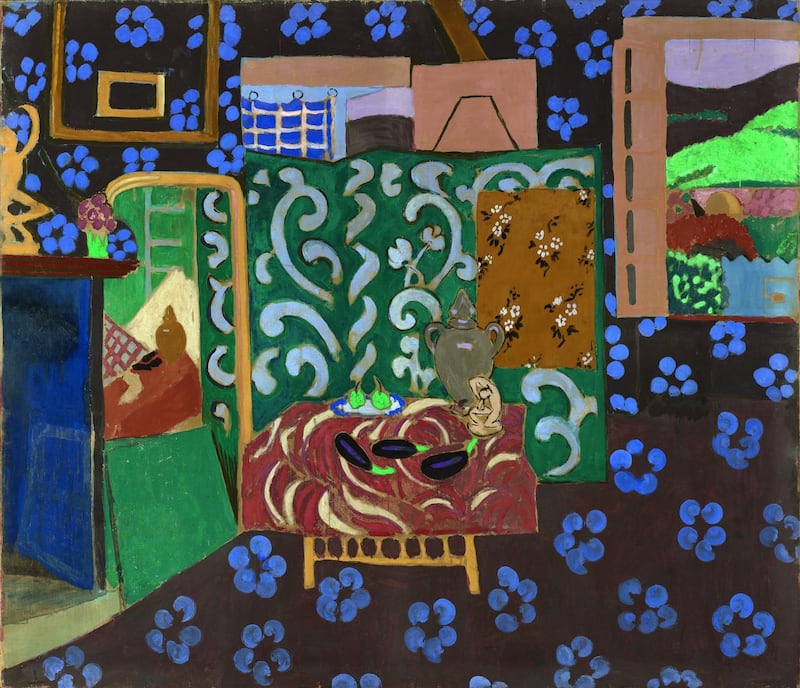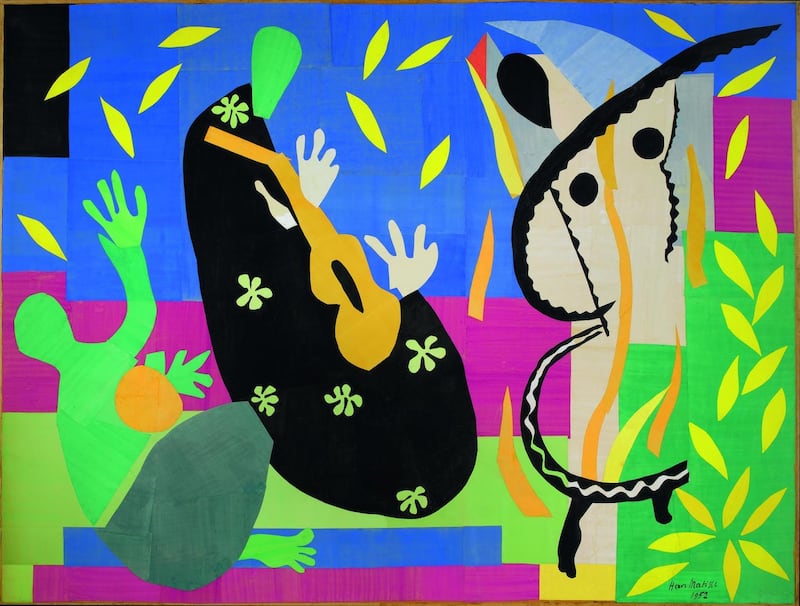Like most of Henri Matisse’s work, The Romanian Blouse appears deceptively simple. A woman smiles pensively, blossoming like a flower. Her face and dark hair are mere line drawings.
When Matisse painted it in 1939-40, France was paralysed by the so-called phoney war that preceded German invasion. Turned sideways, the blue, white and red canvas is a French tricolour. With this painting, "Matisse gave France a jolt of happiness and a coded message", says Aurélie Verdier, commissioner of Matisse: Like a Novel, at the Pompidou Centre in Paris until February 22nd. The exhibition marks the 150th anniversary of Matisse's birth.
The Romanian Blouse became a cheery mascot to occupied France, its modern Mona Lisa. Postwar film-makers adored her. Jean-Luc Godard stuck a postcard of the painting on a bedroom wall in Pierrot le Fou. Éric Rohmer decorated Pauline's room in Pauline à la Plage with her poster.

Matisse had planned to flee when the war started, but then reconsidered. “I felt like I was deserting,” he wrote to his son Pierre. “If everyone who has any value leaves, what will remain of France?”
Matisse spent the war in Nice and Vence, under virtual lockdown. His wife Amélie and daughter Marguerite joined the Resistance in Paris and were arrested by the Gestapo. “My life is within the walls of my studio,” he wrote to Pierre.
Yet the only brooding work of art in the entire, 2,000sq m exhibition was painted at the beginning of the first World War, not the second. A black rectangular void covers two-thirds of the canvas in French Window at Collioure (1914). Faint lines seem to hint at a balcony in the darkness.
The poet Louis Aragon spent 30 years writing Henri Matisse: A Novel, from which the title of the Paris show was taken. Aragon said French Window at Collioure was "the most mysterious painting ever painted". It was an obvious metaphor for the war, and an exception in an otherwise radiant oeuvre.
He wrote euphorically of 'almond trees in blossom amid silvery olive trees, and the blue, blue sea, so blue one could eat it'
“Matisse is often called the painter of happiness, and for once the legend is true,” says Verdier. “Matisse’s goal was to give happiness to people who looked at his work. His art is just what we need in this anxious, dark time.” As Aragon put it, “The optimism of Matisse is a gift to our ailing world.”
Art saved Matisse from a career as a lawyer, the fate his merchant father had chosen for him. And it revived him in old age, after near-fatal surgery.
Aged 20, Matisse was convalescing from appendicitis. He was dreading going back to his job as a law clerk when his mother surprised him with a paint set. “The mere act of painting made me interested in life... It was paradise found. I was free, alone, calm, confident, whereas I had always been a little anxious and bored,” he said.
Matisse began as a conventional painter. Despite initial success – he sold a painting to the state in 1895 – he felt dissatisfied and determined to break the mould. He purchased Cézanne’s Three Bathers. The painting became a talisman that Matisse said gave him “faith and perseverance”.
Matisse was born in cold, damp northeastern France and fell in love with the Mediterranean during his honeymoon trip to Corsica in 1898.
He wrote euphorically of “almond trees in blossom amid silvery olive trees, and the blue, blue sea, so blue one could eat it. The dark green orange trees with fruit like encrusted jewels, tall eucalyptus trees with foliage spread like dark blue cockerel feathers. And almost always, the backdrop of high snow-capped mountains.”
Matisse painted neo-impressionist still lifes, visibly influenced by Cézanne and shimmering with luminosity. Colour and light would be the hallmarks of his oeuvre, windows a favourite theme.
After early flirtations with pointillism and fauvism, Matisse rejected theory and forged his own path, establishing what Aragon called “an incessant requirement of invention”.
In his 1906 Self Portrait, Matisse wears a striped sailor’s jersey and stares defiantly at the viewer, his face painted incandescent, fauvist green. For the fauves, Matisse’s fellow painter André Derain said, “colours became sticks of dynamite. Light exploded from them.”

Early in the 20th century, Matisse’s work was snapped up by Russian and American millionaires, giving him international recognition. It was slower to find favour with the French.
One of Matisse's wealthy patrons, the American writer Gertrude Stein, said the Self Portrait was "too intimate to be exhibited in public". The British critic Charles Lewis Hind found it almost "radioactive".
Matisse painted his daughter Marguerite – sitting regally, her high collar and brooch hiding a scar from a tracheotomy to treat a childhood illness – with a black cat. He gave a similar portrait of Marguerite to Pablo Picasso, his friend and rival for the status of greatest painter of the 20th century.

Georges Duthuit, the art critic whom Marguerite later married, compared the 1910 portrait to a Byzantine mosaic.
Hind said Matisse painted “as a child might have painted in the dawn of art, seeing only the essentials in form and colour”. That was exactly what Matisse aspired to.
In Luxury I (1907), Venus stands on a beach, attended by nude women, one brandishing a bouquet, the other arranging drapery at the goddess's feet. The painting prefigures the giant frescoes of Music and Dance that Matisse would paint for the Russian Sergei Shchukin and the American Alfred Barnes.
Not all Americans were Matisse fans. When Matisse exhibited in Chicago in April 1913, students at the School of the Art Institute staged a mock trial for “artistic murder and theft, pictorial arson, degenerate colour”. The students burned three Matisse paintings in effigy, including Luxury I.
A newspaper critic of the time mocked the painting as 'A wallpaper design for a mad person's reception room'
Matisse said sculpting gave him a rest from painting, but his art was all of a piece. His bronze nudes closely resembled his 1920s paintings of Odalisques and his Blue Nudes of the 1950s.
The fellow painter who purchased Matisse’s first decorative still life, The Red Carpets (1906), described it as “a large study of fabrics – dazzling, a jewel”. The surface is mostly flat, though drapery on the right hints at perspective. Matisse was influenced by Islamic art, and often included orientalist objects such as rugs and ceramics in his compositions. Intricate patterns of interlaced lines – arabesques -- were a frequent motif.
Matisse saturated his four large Symphonic Interiors (1911) with an orgy of decorative detail. Three were purchased by Shchukin, leaving only one, Interior with Aubergines, in France.

A newspaper critic of the time mocked the painting as "A wallpaper design for a mad person's reception room". Matisse bought Interior with Aubergines back from Michael and Sarah Stein, the brother and sister-in-law of Gertrude, and donated it to the Musée de Grenoble.
Today, Verdier considers Interior with Aubergines “the most important canvas by Matisse in French public collections”. Because it is large and painted in tempera, Aubergines is fragile and rarely travels. It is the revelation of the Pompidou exhibition, with a whole room to itself.
The French writer and poet Dominique Fourcade called Interior with Aubergines "radically decorative". It has no focal point, though Matisse again toys with perspective in the fireplace to the left of the canvas. The reflection in the mirror next to the fireplace does not correspond to what we see in the room. A woman's hem and ankle seem to traverse the reflection, adding a sense of mystery and movement. One is vaguely reminded of Velazquez' Meninas.

Matisse said he “came within an Angora cat hair” of dying of colon cancer in 1941. He was too weak to stand and paint, so he began what he called “painting with scissors”, transforming the découpage or paper cut-out technique he had used to design large frescoes into a new artistic discipline that melded form and colour and blurred the frontier between drawing, painting and sculpture.
Large sheets of paper were coated with gouache, opaque watercolours thickened with glue. Matisse cut forms from the coloured paper and instructed assistants to arrange them on canvas.

The découpage works Matisse started after his surgery and continued almost until his death in 1954 were the last creative burst of a spectacular career. He used découpage to illustrate magazine and catalogue covers, to create the 1947 collector’s book Jazz, the series of Blue Nude “paintings” and the monumental Sorrows of the King. Découpage enabled Matisse to design the stained-glass windows of the Chapelle du Rosaire in Vence, which he considered his masterpiece.
Matisse saw himself as a medium whose duty it was to convey the beauty of the world to suffering humans. But the happiness he felt was never commensurate to the happiness he gave. Unlike Picasso, he suffered from self-doubt.
“Painting makes me happy sometimes, but one pays for these moments,” Matisse wrote. “My fate is comprised of two things, one excellent, the other terribly bitter, which do not blend into an acceptable average. If you tell me I am a great artist, I cannot really believe it, for my strength comes from my near constant doubt.”












